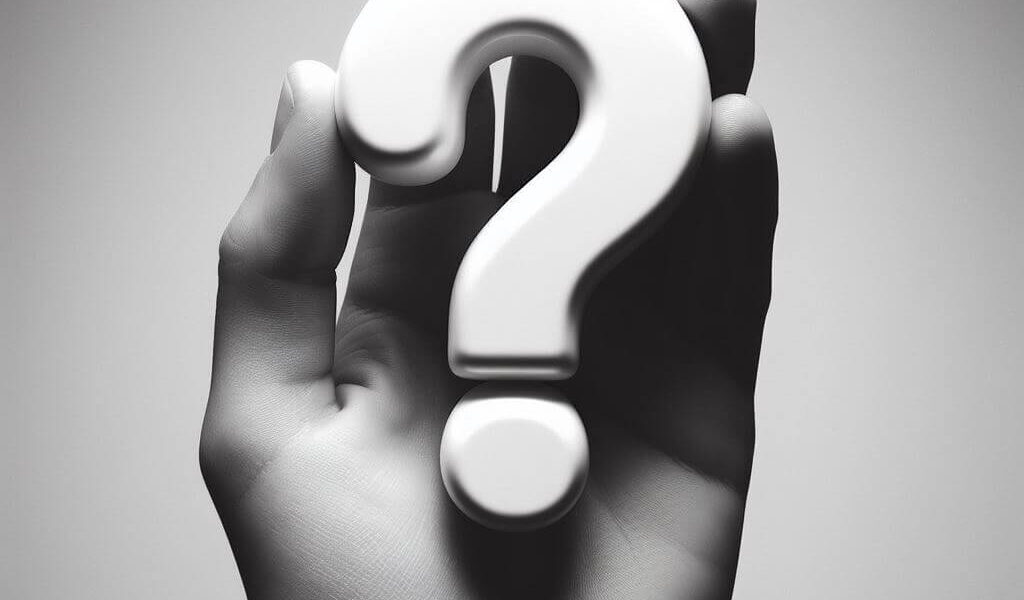Unlocking the Best Tips for Using the Upside Down Question Mark Spanish
Introduction
Have you ever been reading a Spanish text and come across a strangely oriented question or exclamation mark that looks oddly out of place? You weren’t imagining things! Those uniquely placed punctuation marks serve an essential purpose in Spanish. Mastering the ‘Upside Down Question Mark Spanish’ is essential for linguistic precision, adding a distinctive touch to inquiries in this Romance language.
The opening question and exclamation marks that seem confusing or upside down at first glance are critical components of written Spanish. Known formally as opening inverted questions and exclamation points, these marks ¿ and ¡ might seem bizarre for those unfamiliar with their role. However, they have a long history of orienting readers and setting clear tones for questions and exclamations in Spanish prose. Writers and linguists utilize the Upside Down Question Mark Spanish to denote the start of a question, adding linguistic nuance to the language.
This comprehensive guide will unpack everything you need about the Upside Down Question Mark Spanish. You’ll discover what exactly they are used for when you need to utilize them, why they exist in the first place, and even how to type them correctly on your device. We’ll also cover some common mistakes people make with these unique punctuation marks so you can avoid looking silly when using them in your Spanish writing. The Upside Down Question Mark Spanish writing provides a visual cue, aiding readers in recognizing interrogative sentences at a glance.
So turn that frown upside down as we dive into the surprisingly helpful world of inverted Spanish punctuation! Equipped with the right background, those oddly placed marks will look less perplexing each time you encounter them. Let’s explore the method behind the upside-down wording madness. In Spanish grammar, the Upside Down Question Mark Spanish functions as an essential element, signaling both the beginning and end of interrogative sentences.

When Should You Use the Upside Down Question Mark Spanish?
You learned that these oddly placed upside-down questions and exclamation marks have a helpful purpose in Spanish writing. But when exactly are you supposed to use them?
The rules are pretty simple:
- ¿ – Use this inverted question mark at the beginning of any interrogative sentence, basically anything that is a direct question.
- ¡ – Use this inverted exclamation point at the start of any exclamatory phrase, basically anything involving excitement or emotion.
Here is a helpful table outlining some examples:
| Type | Example Spanish Sentence | English Translation |
| Interrogative (question) | ¿Cómo estás? | How are you? |
| Exclamatory (exclamation) | ¡Estoy muy bien! | I’m very good! |
As you can see, in Spanish, both questions and emotive exclamations take two punctuation marks.
- The inverted one at the start indicates the tone and intention to the reader.
- The standard one at the end punctuates the sentence as usual.
When to Use the Inverted Question Mark ¿
The inverted question mark always comes at the start of a direct question in Spanish. For example:
- ¿Dónde vives?
- ¿Quieres ir al cine?
- ¿Cuál es tu nombre?
Even if the question is short, you still keep the ¿ at the beginning:
- ¿Sí?
- ¿No?
This inverted question mark allows a Spanish reader to recognize your text as an interrogative sentence instantly and prepares them to anticipate a question. Learning to use the Upside Down Question Mark Spanish is an essential aspect of mastering proper punctuation in the Spanish language.
When to Use the Inverted Exclamation Mark ¡
Similarly, you would start any excitable exclamation with an inverted ¡ in Spanish. For example, emotions like happiness, anger, frustration, and surprise:
- ¡Basta!
- ¡Fantástico!
- ¡Increíble!
You can also emphasize commands and give them more oomph by starting with ¡. For example:
- ¡Ven aquí!
- ¡Déjame en paz!
The inverted exclamation mark lets Spanish readers instantly recognize emotive tone and intention. It functions similarly to ending an exclamation in English with an exclamation point but also sets the tone from the very start.
So, in summary, if you are asking a direct question or expressing emotion, open your Spanish sentences with ¿ or ¡ accordingly! It is an essential piece of Spanish punctuation.
Spanish grammar rules dictate the placement of the Upside Down Question Mark Spanish, contributing to the clarity and structure of written communication.
Why Do Exist Upside Down Question Mark Spanish?
As we’ve established, Spanish utilizes these inverted question (¿) and exclamation (¡) marks at the start of interrogative and excitable sentences. But why exactly did these rather odd grammatical constructs become such prominent components of the Spanish language?
A Brief History
The upside-down question and exclamation marks have a long tradition in Spanish literature and manuscripts. They developed as a handy visual aid for quickly denoting the start of certain kinds of sentences.
- Some of the earliest examples date back to the mid-1500s in handwritten documents from Spain. Scribes experimented with the inverted marks to differentiate questions and commands.
- By the 1700s, the inverted punctuation gained more widespread usage in Spanish prose and became common in writing across the Spanish Empire.
- Eventually, their utility and effectiveness solidified them as core Spanish language grammar rules by the mid-1800s.
So, in summary, the inverted marks evolved from informal handwriting conventions into official grammatical norms over 300+ years! The presence of the Upside Down Question Mark Spanish text reflects the language’s rich linguistic heritage and adherence to grammatical conventions.
Difference From Other Languages
Another reason why Spanish utilizes these upside-down marks relates to how Spanish structure differs from its sibling Romance languages of French, Italian, and Portuguese:
- Many languages like English and French rely solely on a final punctuation mark to denote questions/exclamations.
- Spanish questions/emotional lines, however, don’t always follow inverted word order or tidy constructions. Without that upfront indicator, the tone can easily be missed.
- The initial upside-down marks immediately clarify the intention for longer or more complex Spanish sentences before you even read the entire line.
For example, compare:
| Language | Sentence | Question Mark Position | Clarity |
| English | How are you doing today? | End | Clear from inversion |
| Spanish | ¿Cómo estás haciendo hoy? | Start | Needed for long sentence |
Having that upfront orientation allows smoother reading comprehension in Spanish writing.
Enhanced Readability in Print
Finally, Spanish handwriting conventions developed to flow better visually when read upside down. In the era before computers, angling question/exclamation marks avoided stacking lines high upwards disproportionately.
For example, in neat cursive upside-down handwriting:
¡Fantástico día!
¿Cómo estás?
I kept letters neatly descending line by line instead of shooting upwards.
In essence, inverted Spanish punctuation evolved various advantages related to history, grammar structures, convention, and manuscript readability over hundreds of years to become standard practice.
Spanish speakers employ the Upside Down Question Mark Spanish to signal the start of a question, distinguishing it from declarative statements.
How to Easily Type Upside Down Question Mark Spanish
You now grasp the importance of using inverted question (¿) and exclamation (¡) marks when writing properly formatted Spanish. But how exactly do you type those oddly oriented Upside Down Question Mark Spanish on your keyboard and device?
Have no fear – adding ¿ and ¡ to your documents is simple once you know a few typing shortcuts and tricks.
On Windows
Luckily, Windows computers offer handy shortcut keys to access ¿ and ¡ easily:
- ¿: Hold the ALT key and press 168 on your numeric keypad. Β Release and voilΓ, ¿ appears!
- ¡: Hold down ALT + CTRL + Shift together, then hit the ? key to make ¡ show up.
**Example**:
I held down ALT + 168 and ¿ now start my question properly ΒΏVes como es fΓΎcil?
I pressed ALT + CTRL + SHIFT + ? together, and ¡ now begins my excitement correctly Β¡Estupendo!
If accessing those number/function commands is tricky:
- Try switching your keyboard input language to Spanish, enabling typing ¿ ¡ from the direct punctuation keys.
- You can also create custom text replacements or shortcuts for easy insertion.
So, Windows users can leverage shortcuts, language toggles, or macros to start questions and exclamations correctly.
On Mac
Mac computers also include built-in shortcuts for inverted questions and exclamation marks:
- ¿ – Press Option + Shift + ?
- ¡ – Press Option + 1
Example:
When I held down Option + Shift + ?, it inserted ¿ automatically to lead my question ¿ EstΓ’s bien?
And Option + 1 gave me ¡Yippee! to kick off my joyful outburst ¡Yippee!
Additionally, you can:
- Add these inverted marks to your Mac keyboard text replacements for easy typing.
- Switch keyboard language input to Spanish layout,, including dedicating keys for ¿ and ¡ punctuations.
So Apple users can conveniently get upside down question and exclamation syntax right each time!
Other Options
If you are working across devices, apps, browsers, and programs, more universal solutions exist too:
- Copy/Paste – Simply copy inverted marks from websites like this explaining proper ¿ ¡ usage and directly paste where needed.
- Character Map – Use character map tools to find ¿ and ¡ symbols and conveniently place them with clicks or taps.
With this wide range of shortcuts, replacements, and lookup options: typing inverted Spanish punctuation is easy no matter your tech setup!
Give that keyboard a workout so your Spanish sentences can succeed visually 😃 and verbally 💬. Proper tone and clarity are just a couple of keystrokes away. Linguistic enthusiasts appreciate the aesthetic and functional significance of the Upside Down Question Mark Spanish language.

Avoid These Common Mistakes with Inverted Marks
As we’ve reviewed, in Spanish, questions always start with ¿, and exclamations always begin with ¡ before closing with proper punctuation. The Upside Down Question Mark Spanish is a linguistic curiosity for those exploring the nuances of punctuation across different languages, particularly in Spanish.
However, forgetting these inverted marks when writing casually or mixing languages is an easy mistake. Be aware of these common errors:
Forgetting the Opening Mark Entirely
In informal contexts like text messages or emails, people often forget the opening inverted punctuation:
- Wrong ❌: Como estas?
- Right ✅: ¿Cómo estás?
Missing that initial ¿ or ¡ omits a critical piece of Spanish syntax.
Using Just One Final Punctuation Mark
Another common tendency is closing with just a single question/exclamation mark without the inverted opening:
- Wrong ❌: Como estas?
- Still Wrong ❌: Como estas!
- Right ✅: ¿Cómo estás?
The lone ending punctuation leaves readers needing that upfront tonal orientation in Spanish.
## Limiting Upside Down Marks to Formal Writing
Some Spanish speakers only limit inverted marks to very formal writing like books, newspapers, or academic papers. However, questions and exclamations in all contexts require ¿ and ¡ accordingly:
- Wrong in text ❌: Quieres ir al cine?
- Right in text ✅: ¿Quieres ir al cine?
This consistent use, even casually, trains proper grammar.
Here is a helpful checklist to ensure proper Spanish inverted punctuation every time:
✅ Open questions with ¿
✅ Start exclamations with ¡
✅ End with correct final? Or! marks
Following those simple principles in all your Spanish writing prevents confusing or omitting oddly placed but meaningful upside-down opening marks!
Why Do Upside Down Question Mark Spanish Exist in Spanish?
A Brief History
The upside-down question and exclamation marks have a long tradition in Spanish literature and manuscripts. They developed as a handy visual aid for quickly denoting the start of certain kinds of sentences.
Some of the earliest examples date back to the mid-1500s in handwritten documents from Spain. Scribes experimented with the inverted marks to differentiate questions and commands. By the 1700s, the inverted punctuation became more widespread in Spanish prose and ordinary in writing across the Spanish Empire. Eventually, their utility and effectiveness solidified them as core Spanish grammar rules by the mid-1800s. The presence of the Upside Down Question Mark Spanish writing reflects the language’s commitment to conveying questions with visual distinction. Spanish writers utilize the Upside Down Question Mark Spanish skillfully, emphasizing the importance of proper punctuation in conveying meaning and tone.
So, in summary, the inverted marks evolved from informal handwriting conventions into official grammatical norms over 300+ years!
Difference From Other Languages
Another reason why Spanish utilizes these upside-down marks relates to how Spanish structure differs from its sibling Romance languages:
- Many languages like English and French rely solely on a final punctuation mark to denote questions/exclamations.
- Spanish questions/emotional lines sometimes follow inverted word order or tidy constructions. With that upfront indicator, it can be easy to notice the tone.
- The initial upside-down marks immediately clarify the intention for longer or more complex Spanish sentences before you even read the entire line.
For example, compare:
| Language | Sentence | Question Mark Position | Clarity |
| English | How are <u>you</u> doing today? | End | Clear from inversion |
| Spanish | ¿Cómo estás haciendo hoy? | Start | Needed for a long sentence |
Having that upfront orientation allows smoother reading comprehension in Spanish writing.
Enhanced Readability in Print
Finally, Spanish handwriting conventions developed to flow better visually when read upside down. In the era before computers, angling question/exclamation marks avoided stacking lines high upwards disproportionately.
For example, in neat cursive upside-down handwriting:
¡Fantástico día!
¿Cómo estás?
I kept letters neatly descending line by line instead of shooting upwards.
In essence, inverted Spanish punctuation evolved various advantages over centuries to become standard practice. Spanish speakers seamlessly incorporate the Upside Down Question Mark Spanish, enriching their written expression with a punctuation mark that sets their language apart.

How to Easily Type Exclamation Marks and Upside Down Question Mark Spanish
You now grasp the importance of using inverted question (¿) and exclamation (¡) marks when writing properly formatted Spanish. But how exactly do you type those oddly oriented upside-down punctuation marks on your keyboard and device?
The use of the Upside Down Question Mark Spanish exemplifies the language’s commitment to clear communication and grammatical precision.
Have no fear – adding ¿ and ¡ to your documents is simple once you know a few typing shortcuts and tricks.
On Windows
Luckily, Windows computers offer handy shortcut keys.
To type:
- ¿ – Hold the ALT key and press 168 on your numeric keypad.
- ¡ – Hold down ALT + CTRL + Shift, then hit the ? key.
You can switch your keyboard input language to Spanish or create custom text replacements.
On Mac
Mac computers also include built-in shortcuts:
- ¿ – Press Option + Shift + ?
- ¡ – Press Option + 1
Add inverted marks to your Mac keyboard text replacements or switch keyboard language input to Spanish.
## Other Options
If you are working across devices, apps, and programs:
- Copy/Paste inverted marks from websites explaining ¿ ¡ usage.
- Use Character Map tools to insert symbols with clicks or taps.
So, typing inverted Spanish punctuation is straightforward, with shortcuts, replacements, and lookups! Give that keyboard a workout so your Spanish sentences succeed visually and verbally.
Avoid These Common Mistakes with Inverted Marks
As we’ve reviewed, in Spanish, questions always start with ¿, and exclamations always begin with ¡ before closing punctuation. Students learning Spanish often encounter the Upside Down Question Mark Spanish as a distinctive feature, contributing to their understanding of language structure.
However, it’s an easy mistake to forget these inverted marks casually or mix languages. Be aware of these errors:
Forgetting the Opening Mark
In informal contexts like text messages, people often forget the opening:
- Wrong ❌: Como estas?
- Right ✅: ¿Cómo estás?
Missing that initial ¿ or ¡ omits critical Spanish syntax.
Using Just One Final Punctuation Mark
Another tendency is closing with just a single question/exclamation mark:
- Wrong ❌: Como estas?!
- Right ✅: ¿Cómo estás?!
The lone ending punctuation leaves readers needing that upfront tonal orientation.
Limiting Upside Down Marks to Formal Writing
Some Spanish speakers only limit inverted marks to formal writing like books or academic papers. However, questions and exclamations in all contexts require ¿ and ¡:
- Wrong in text ❌: Quieres ir al cine!
- Right in text ✅: ¿Quieres ir al cine!
This consistent use trains proper grammar.
Here is a helpful checklist to ensure proper Spanish inverted punctuation every time:
✅ Open questions with ¿
✅ Start exclamations with ¡
✅ Use correct ending punctuation
Following those simple principles prevents confusing or omitting those meaningful upside-down opening marks!

Conclusion
So there you have it – the full scoop on those oddly placed, upside-down question (?) and exclamation (!) marks in Spanish. While the inverted ¿ and ¡ might seem confusing or unnecessary when you first encounter them, they carry centuries of usefulness in clarifying tones and intention. Their long evolution in everything from formal books to casual letters into officially codified grammar rules shows the actual value.
Hopefully, this guide gave you an appreciation of how the upside-down marks connect to Spanish history and handwriting, align to clear communication, and help readers understand your questions and emotions. And with all those typing and troubleshooting tips, you can start integrating ¿ and ¡ seamlessly into your Spanish writing, whether a simple text message or an impassioned speech.
The ‘Upside Down Question Mark Spanish’ is more than a punctuation mark; it’s a cultural and linguistic emblem that enhances the authenticity of written communication.
So feel empowered to flip your punctuation upside down on its head! In doing so, you’ll keep your grammar correctly oriented, your sentences crystal clear, and your Spanish skills will continue to escalate. The long story of inverted marks contains far more logic than initially appears once you dive deeper into that background. ¡Fantástico!
The distinct Upside Down Question Mark Spanish typography emphasizes the importance of clarity and proper punctuation in written communication.

